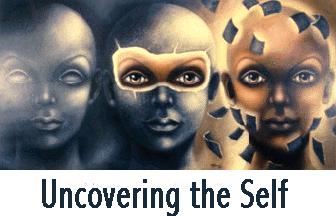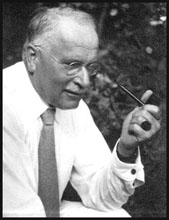



Connections Through Time, Issue 7: April - June 2000
![]()
 Scientific modeling of the subconscious (SC) aspects of the self into an integrated view of reality is not imminent, to say the least. An integrated view of realty would have to include the mysteries of consciousness as studied in the fields of psychiatry and psychology as well as the unification of quantum mechanics and relativity theory. No easy task!
Scientific modeling of the subconscious (SC) aspects of the self into an integrated view of reality is not imminent, to say the least. An integrated view of realty would have to include the mysteries of consciousness as studied in the fields of psychiatry and psychology as well as the unification of quantum mechanics and relativity theory. No easy task!
Distinctions exist in the definitions of 'subconscious' and 'unconscious'. The unconscious mind, for example, is usually envisioned as being "further away" from the 'conscious mind'. We will use SC to denote subconscious AND unconscious.
The SC and self are closely related through consciousness. Here is a definition of "self" from Webster's Revised Unabridged Dictionary, © 1996, 1998 MICRA, Inc:
self \Self\, n.; pl. Selves. 1. The individual as the object of his own reflective consciousness; the man viewed by his own cognition as the subject of all his mental phenomena, the agent in his own activities, the subject of his own feelings, and the possessor of capacities and character; a person as a distinct individual; a being regarded as having personality.
You might want to focus your "reflective consciousness" upon the following questions:
How important do you believe your SC is? What capabilities and influence do you believe it has on your life? Do you believe you can increase/modify the capabilities of your SC in a conscious fashion? Do you believe that you have a "deeper self" or "higher self", or that you are part of a "collective consciousness" that is accessible to you?
 Scientists have examined the reality of the SC for over a century. Sigmund Freud (1856 - 1939) was the scientist (medical researcher) who first introduced western society to the concept of a SC that could strongly interact with the outer conscious self. For Freud, the SC was that part of the mind that stores memories and desires. He was particularly interested in suppressed memories and emotionally charged desires (especially sexual desires) that were actively pushed-down into the unconscious part of the self. He connected these types of repressed childhood memories with adult behavior and dreams. He gave birth to psychoanalysis as a scientific tool for recovering these memories and for investigating the mind and human behavior.
Scientists have examined the reality of the SC for over a century. Sigmund Freud (1856 - 1939) was the scientist (medical researcher) who first introduced western society to the concept of a SC that could strongly interact with the outer conscious self. For Freud, the SC was that part of the mind that stores memories and desires. He was particularly interested in suppressed memories and emotionally charged desires (especially sexual desires) that were actively pushed-down into the unconscious part of the self. He connected these types of repressed childhood memories with adult behavior and dreams. He gave birth to psychoanalysis as a scientific tool for recovering these memories and for investigating the mind and human behavior.
 Carl Jung (1875 - 1961) studied with Freud and eventually founded his own school of "Analytical Psychology". Jung introduced two new concepts that remain controversial to this day:
Carl Jung (1875 - 1961) studied with Freud and eventually founded his own school of "Analytical Psychology". Jung introduced two new concepts that remain controversial to this day:
Collective Unconscious
"...While the personal unconscious is made up essentially of contents which have at one time been conscious, but which have disappeared from consciousness through having been forgotten or repressed, the contents of the collective unconscious have never been in consciousness, and therefore have never been individually acquired but owe their existence exclusively to heredity. Whereas the personal unconscious consists for the most part of complexes, the content of the collective unconscious is made up essentially of archetypes." (Jung, quoted from Description of the Archetypes and the Collective Unconscious)
"...Of the archetypes he says, 'Indeed, not even our thought can clearly grasp them, because it never invented them'.(1) Nevertheless it has been possible to isolate various figures, which recur in dreams and fantasy series, which appear to have a typical significance for human beings, and which can be correlated with historical parallels and myths from all over the world; these Jung, after much careful research work, has described as some of the principal archetypes affecting human thought and behavior, and has named the persona, the shadow, the anima and animus, the old wise man, the earth mother, and the self. Here again we need to remember, when speaking of archetypes of the collective unconscious, that there are no watertight compartments in the mind, and that even the archetypes can have a personal aspect." Quoted from An Introduction to Jung's Psychology by Frieda Fordham.
"...The self, however, can include both the conscious and the unconscious. It
appears to act as something like a magnet to the disparate elements of the personality and the
processes of the unconscious, and is the centre of' this totality as the ego is the centre of
consciousness, for it is the function which unites all the opposing elements in man and woman,
consciousness and unconsciousness, good and bad, male and female, &c., and in so doing
transmutes them. To reach it necessitates acceptance of what is inferior in one's nature, as well as
what is irrational and chaotic. ...
The term 'self' is not used by Jung as in everyday speech, but in the Eastern manner, where as
Atman, Purusha, Brahman, it has been a familiar philosophical concept from time immemorial. In
Hindu thought the self is the supreme principle, the supreme oneness of being." Quote from Archetypes of the Collective Unconscious by Frieda Fordham.
Synchronicity
"A term coined by Carl Jung to denote meaningful coincidence. Events bound by synchronicity are connected by similarity, by meaning, by resonance rather than by causality." (Syncronicity: Useful References)
Synchronicity is often summarized by saying "There is no such thing as a coincidence". When someone has a dream about a person they have not seen in years, and that person shows up on their doorstep the next day, that is synchronicity and not coincidence according to Jung. This concept is very closely related to precognition, since events are not longer driven primarily by our usual understanding of causality. "...Events bound by synchronicity are connected by similarity, by meaning, by resonance rather than by causality." Do you believe that your SC may be aware of apparent "coincidences" before they occur?
So, the ideas concerning precognition have been around for a long time. Scientific data supporting this reality is more recent (References with Links: Stanford Research Institute and Princeton University). These data support the general idea that the SC indeed has access to future information in addition to past personal memories. These connections with the future are somehow broader than the usual causal connections. Cause and effect is real, but seems to be only part of the story of consciousness and the abilities of the SC.
Go to another section of this issue:
Intuition: The SubConscious and an Ongoing Precognition Experiment Applications: AVM Precognition Project: Summary of Results for Protocol-1
![]()